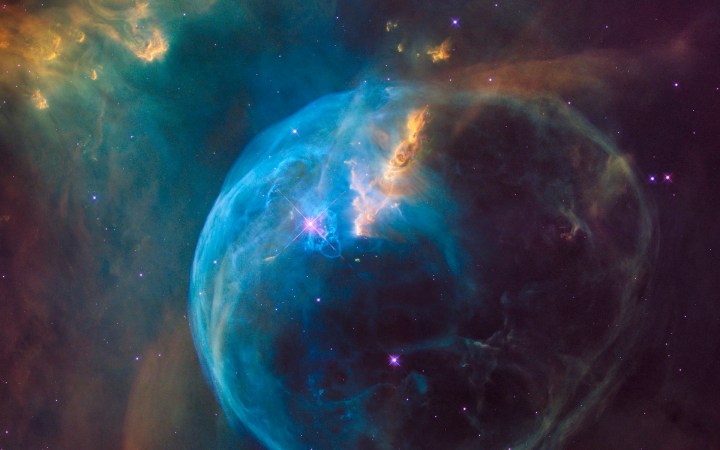
Opening on February 1, Our Place in Space will display images from the Hubble along with several other mediums inspired by sights from the telescope, included oil paintings, mixed media, and sculptures.
Now 26 years old, the Hubble has marked a number of scientific discoveries from the largest black hole ever discovered to an uninhabitable super-earth. But as often as the orbiting telescope has been responsible for scientific findings, it’s also behind a number of impressive images, from an incredible stitched panorama exploring our own galaxy to using something as simple as gravity to photograph the deepest views of space yet.
The traveling exhibition, curated by Antonella Nota and Anna Caterina Bellati, will display images within our own galaxy as well as those that go well beyond the Milky Way, along with art inspired by the views the Hubble has captured. Mars, Jupiter’s Great Red Spot, Saturn’s aurorae, distant galaxies, nebulae, and other space views will be part of the exhibition.
“Hubble has not only made countless astronomical discoveries but also brought astronomy into the public eye, satisfying our curiosity, firing our imagination, and greatly impacting our culture, society, and art,” the Hubble Space Telescope organization said in a press release.
Our Place in Space will first be displayed at the Istituto Veneto di Scienze on the Grand Canal in Venice before moving to several locations in Europe, the U.S., and Australia. Outside of the first two locations in Italy, specifics on additional gallery showings have not yet been released. Admission will be free.
The gallery isn’t Hubble’s first time in the art world either — the telescope’s 20th anniversary was also celebrated with an exhibition in 2010.



